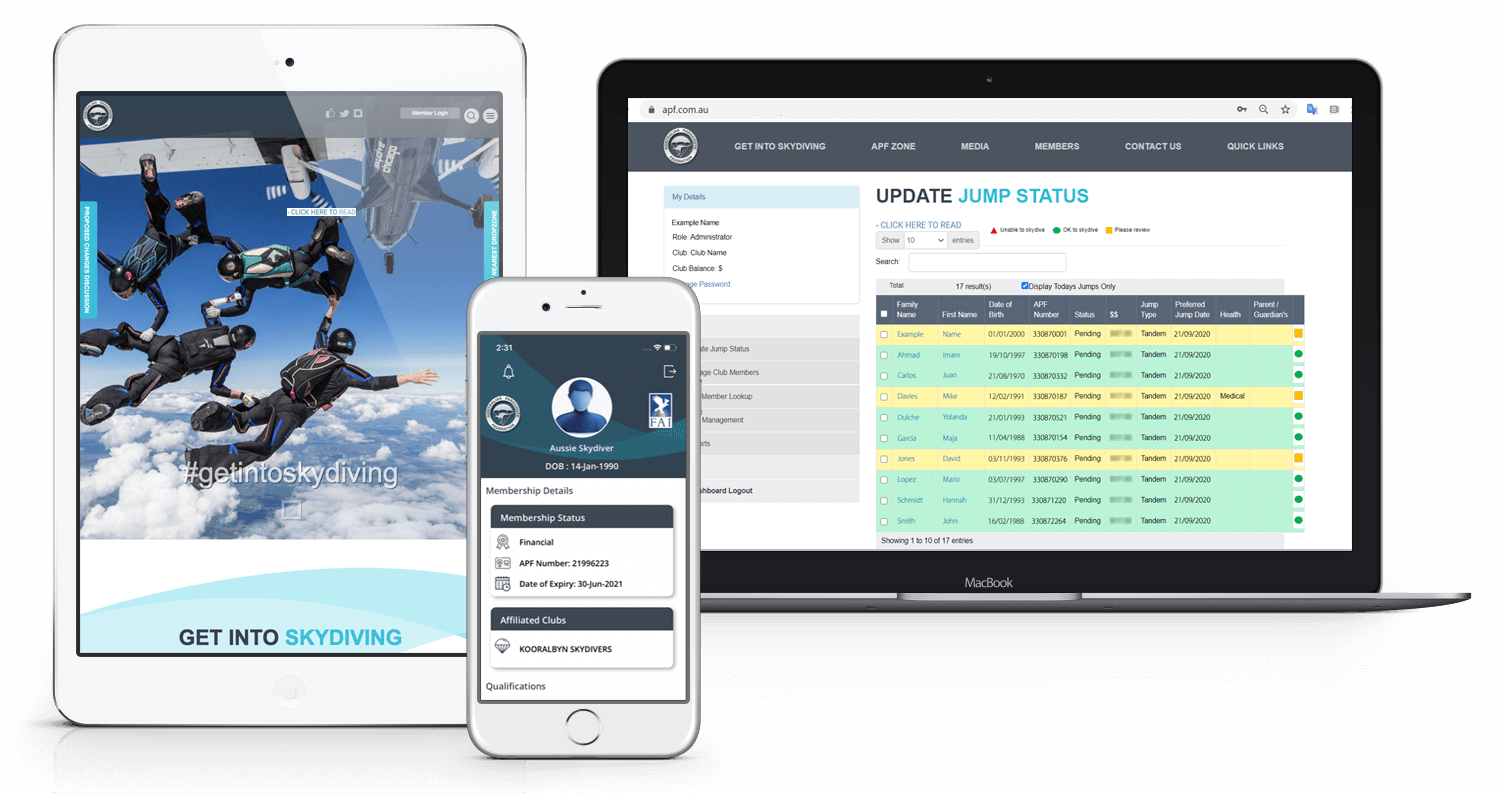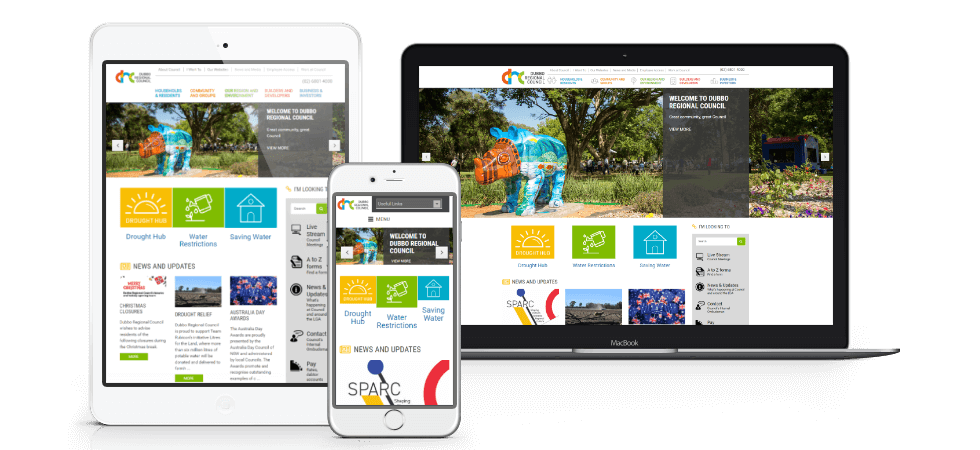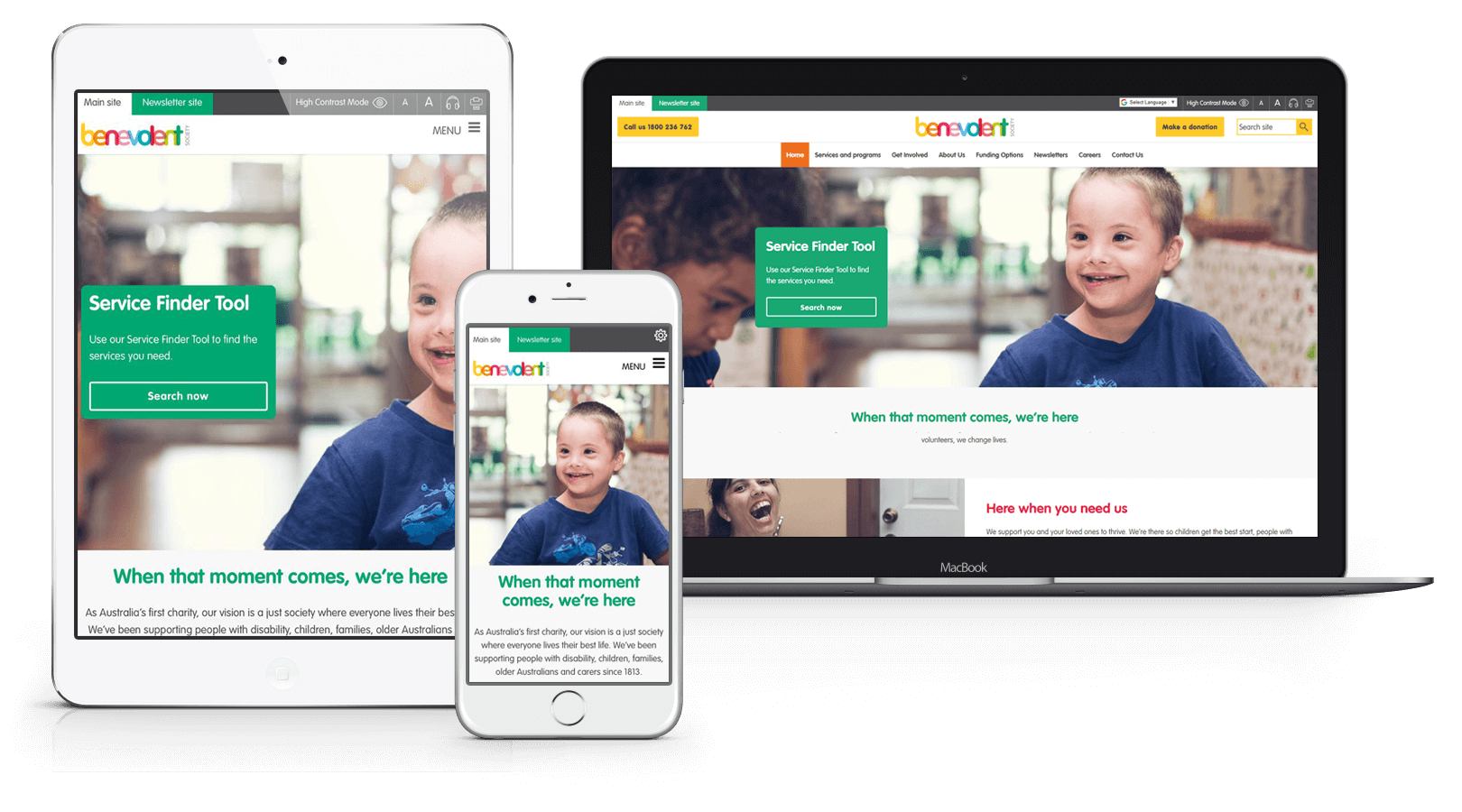Website design matters.
When a visitor clicks on your website the first few seconds are critical. Is it appealing? Is it uncluttered? Can they easily find what they’re looking for?
A successful website design needs to provide a strong user experience, valuable content, and direction.
Let's explore some of the most important elements of a well-designed website, some key website design trends, and three highly successful website design and development services examples.
The Critical Elements of a Well-Designed Website
We often know instinctively what makes a good website design, even if we can't quite articulate it. The major principles of corporate and enterprise web design strategies are actually quite simple. They are based on the following attributes:
- Straightforward. A website must be clear and concise. All of the most important information must be "above the fold", visible to the user immediately upon loading. With a variety of devices now being used, this has become even more difficult to achieve. Which also brings us to...
- Responsive. A website has to be able to respond to the device that it is being viewed on, both in terms of appearance and usage. A single website should be able to load in different layout formats depending on the device that is loading it, but the content should be taken from a single consolidated source.
- Branded. A website should clearly display both the brand and the identity of an organisation. The tone of voice and the company branding should be consistent throughout. Further branding can be achieved through social media integration.
Now that we've covered some of the critical elements of a well-designed website, let's look at some examples of good website designs and what makes them successful.

- Providing a mobile first experience. The number of smartphone users worldwide today surpasses three billion and is forecast to further grow by several hundred million in the next few years. Offering a seamless mobile experience is no longer the exception and as previously mentioned, responsive websites that can be viewed on different sized devices is now the norm. Some organisations are taking this a step further and introducing a mobile app. When APF offered physical membership cards, these cards, which were shown to clubs when a member goes skydiving, was only as accurate as the version they had on them at that time. The cost of printing physical cards, the administration processing time, and the environmental cost of using and sending out plastic cards, was also an issue. From an ease of use, accuracy and cost perspective, automating their traditional paper-based process and having a ‘digital card’ that members showed on the APF app on their mobile phone was necessary.
- Custom website development. Developing a corporate or enterprise website that is built on a content management system can do much more than provide information. The APF website serves as both a public facing site, as well as their membership system. This was custom built by the Elcom team according to their specific requirements. Each club can access a dashboard which lists out which students will be arriving on a given date, along with member information and any account issues. Most of their clubs use this to manage their operational day.
- Integration. There isn’t one platform that will perform every digital function you require. This is why larger clubs that work with APF have the flexibility to implement their own software and integrate it with APF's member database. This automation between systems provides a seamless experience for clubs and members.

- Utilising multi-sites and sub-sites. The Council maintains several sites covering the variety of businesses and facilities it owns, manages and operates, as well as tourism, investment and destination information. The new Airport site delivers information in an uncluttered, easily accessible and mobile responsive way. As a multi-site, it maintains its own identity and URL. For visitors, it looks like a standalone site from the main Council site. However, it still shares a database of content and images with the main Council site, enabling administrators to manage and view content across both sites in one administration interface. The Livestock Markets and Showground are built as sub-sites. These sites share the look and feel of the main Council site, with separate colour schemes and branding. Their URLs would have the main Council site - www.dubbo.nsw.gov.au - as the first part of their URL. Deploying the Airport site as a multi-site enables Dubbo to deliver a standalone website for a fraction of the cost of a new platform licence. All multi-sites also benefit from an automatic upgrade if and when the main website is upgraded to the latest software version. Deploying sub-sites require no additional platform cost as it is simply an additional section within the main Council site.
- Seamless self-service. A website is not only a storefront that is open 24/7, it is an effective customer experience management platform. Each site provides a central location for up-to-date and relevant information and communication for visitors, that is easily searchable and accessible. It also provides an alternative method of public enquiry to that of telephone and face-to-face enquiry. This in turn, improves customer service for residents and tourists requiring information relating the Council’s businesses and facilities.
- Contextual site navigation. As Gerry McGovern, Founder and CEO of Customer Carewords explains, “The primary purpose of web navigation is to help people to move forward. It is not to tell them where they have been, or where they could have gone.” The Council have designed their sites to make it easy for visitors to get the information they need. Using these key insights, they grouped information by broad categories such as Households and Residents, and Community and Groups, above the fold. Noticing that visitors may not know where to start their search, there is a section 'I'm looking to' with a search bar for visitors to type in what they are looking for. This ensures the website (and the brand) is as relevant and relatable to the target audience as possible, and the visitor is able to quickly find and view information related to their needs.

- Understanding the audience. While their primary website audience consists of clients across a range of service portfolios, it also caters to their families, carers, volunteers, partners, donors, media and jobseekers. Prior to starting on the implementation process, TBS undertook user experience (UX) workshops to uncover the needs and motivations of key stakeholders, and used these insights to drive their NFP specific web design process and optimise the website structure and content.
- Optimised for critical customer journeys. The website is a key channel for attracting new clients and retaining existing clients. It helps clients and their family members easily identify which services and programs are available. Along with providing standard content on their services and programs, TBS implemented tools to help potential and existing clients and their families understand what services are available including the Service Finder Tool and Service Location Checker.
- Scalability and administration. Some of what makes a website design good is not visible to the users. Instead, it lies in the back-end: the administrative functionality. The CMS provides a rich, easy-to-use publishing environment for non-technical users, along with sophisticated functions for advanced users and developers to extend the platform functionality. Along with their main website, TBS launched their newsletter site using the Elcom multisite capability. The newsletter site has its own URL and design, and an RSS feed pulls new articles added onto the main website. Visitors can filter the content they see with the search and taxonomy, and subscribe to receive one of four newsletters. When publishers create a new article, they simply need to select the appropriate taxonomy.
Once you've seen a successful website design example in practice, it becomes easy to identify other good websites. But it's still not easy to develop them.
Next Steps
If you're interested in creating an attractive, well-designed, and effective website, we recommend you read the website redesign best practices guide.
It will guide you through step-by-step how to launch a successful website. You'll also receive a project plan checklist to help you get started with your own project.
